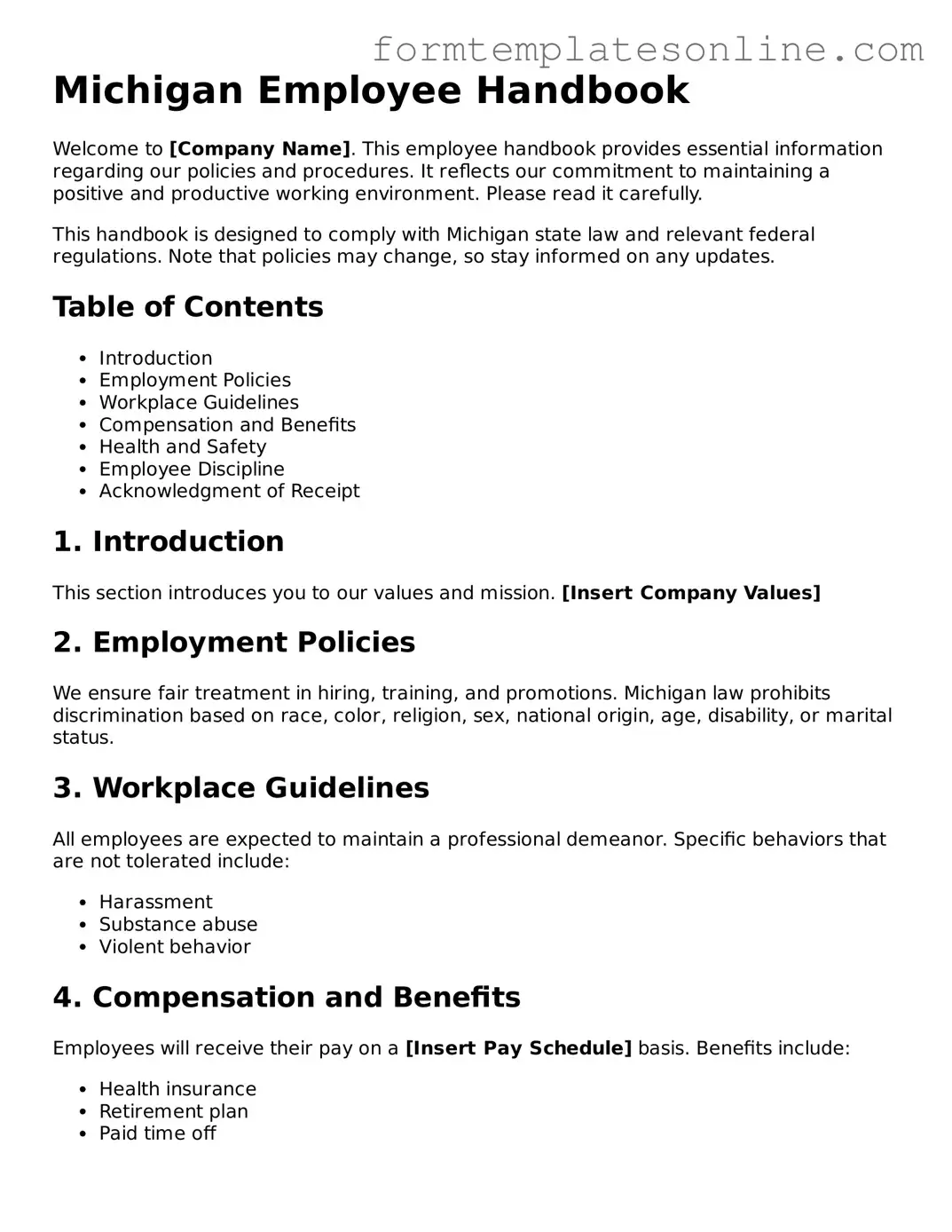Michigan Employee Handbook
Welcome to [Company Name]. This employee handbook provides essential information regarding our policies and procedures. It reflects our commitment to maintaining a positive and productive working environment. Please read it carefully.
This handbook is designed to comply with Michigan state law and relevant federal regulations. Note that policies may change, so stay informed on any updates.
Table of Contents
- Introduction
- Employment Policies
- Workplace Guidelines
- Compensation and Benefits
- Health and Safety
- Employee Discipline
- Acknowledgment of Receipt
1. Introduction
This section introduces you to our values and mission. [Insert Company Values]
2. Employment Policies
We ensure fair treatment in hiring, training, and promotions. Michigan law prohibits discrimination based on race, color, religion, sex, national origin, age, disability, or marital status.
3. Workplace Guidelines
All employees are expected to maintain a professional demeanor. Specific behaviors that are not tolerated include:
- Harassment
- Substance abuse
- Violent behavior
4. Compensation and Benefits
Employees will receive their pay on a [Insert Pay Schedule] basis. Benefits include:
- Health insurance
- Retirement plan
- Paid time off
5. Health and Safety
Your well-being is our priority. Follow all safety guidelines and report hazards immediately. [Insert Emergency Procedures]
6. Employee Discipline
Failure to follow company policies may result in disciplinary action. The process may include:
- Verbal warning
- Written warning
- Termination
7. Acknowledgment of Receipt
All employees must sign an acknowledgment form that they have received and understood this handbook. [Employee Signature Line]
We appreciate your contributions to [Company Name]. Together, we strive to create a supportive workplace.
